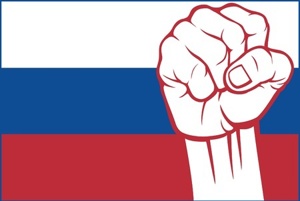Sunday, October 04, 2015
 Vladimir
Putin’s order to begin bombing targets in Syria this week has reminded the world not much has changed in Moscow. But on the same token, it has leaders
wondering exactly what Russia’s ultimate strategic goal is with the aggression in Syria.
Vladimir
Putin’s order to begin bombing targets in Syria this week has reminded the world not much has changed in Moscow. But on the same token, it has leaders
wondering exactly what Russia’s ultimate strategic goal is with the aggression in Syria.
Aside from propping up Bashar al-Assad’s regime, the presence in Syria of Russian bombers flying missions against opposition targets marks the biggest deployment of Moscow’s forces in the region since the Soviet intervention in Afghanistan, which entirely had to do with oil dependence.
Accounting for nearly 70% of its total revenue, oil is imperative to the Russian economy. And not a lot has changed since the 1970’s at the Kremlin. High oil prices emboldened the Soviet leadership and helped the Communist government finance its Cold War against the West while supporting its own consumption.
By placing boots on the ground in Afghanistan the Soviet Union also threatened the West’s vital energy corridor in the Gulf and the host of oil-rich US client states among the region’s newly independent sheikdoms. The Soviets hoped that their military presence in the region would keep oil prices high enough for the country to win the Cold War by causing economic pain for the major industrialized consumer states in the West.
With the collapse in oil prices in the following decade bankrupting the Kremlin, Mikhail Gorbachev was forced to introduce reforms leading to the collapse of the old Soviet state. And with this latest strategy under Putin, it seems they haven’t learned their lesson. They want to drive oil prices up to buoy their economy with their expensive aggression and bombing, but all it's going to do is cost the Kremlin a lot of money. The names have changed, but the game remains the same.
TAGGED AS:
- oil market
- oil prices
- russia aggression
- syrian bombing
